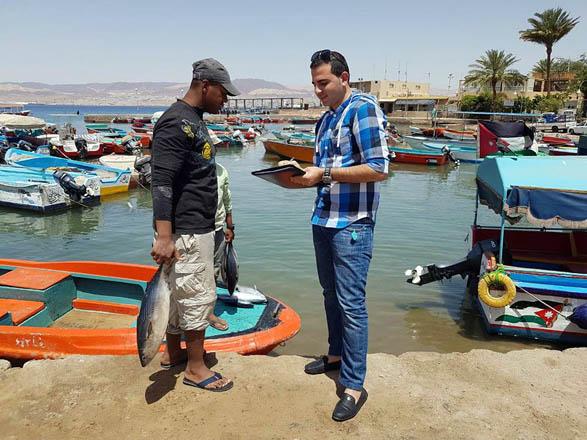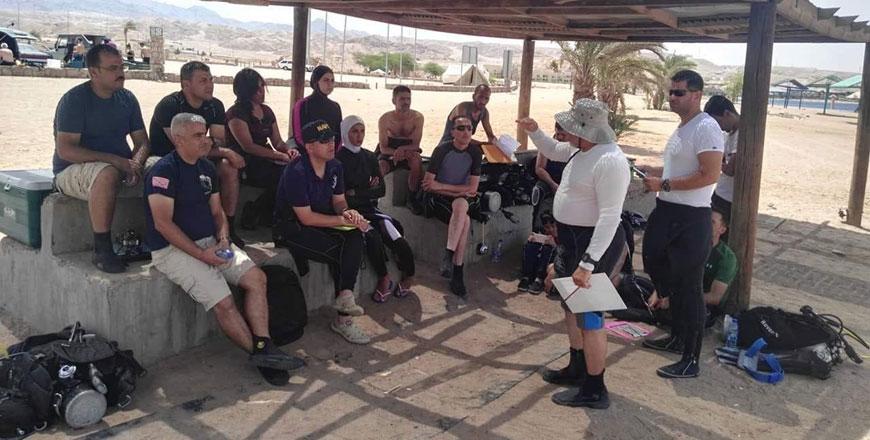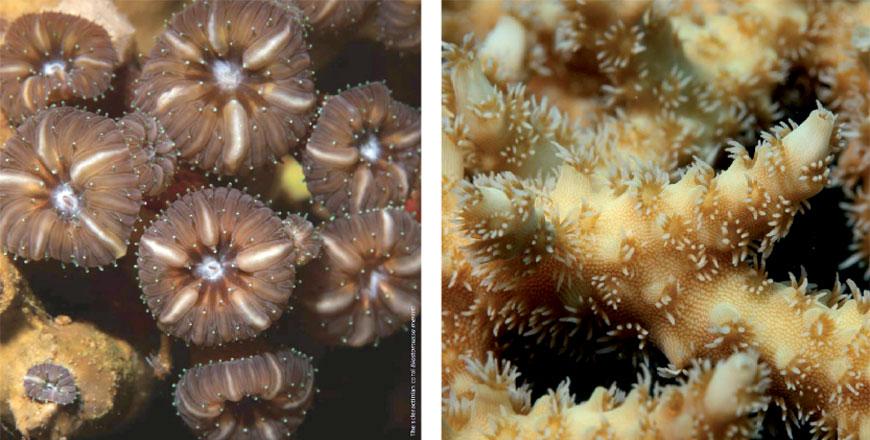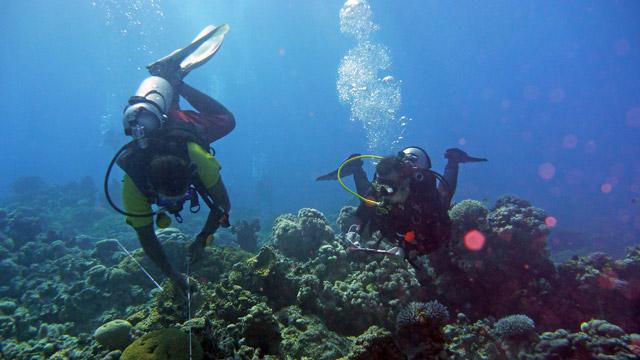You are here
JREDS conducts study to improve fisheries sector in Aqaba
By Hana Namrouqa - Jun 23,2017 - Last updated at Jun 23,2017

A Royal Marine Conservation Society of Jordan’s employee interviews a fisherman in Aqaba recently (Photo courtesy of JREDS)
AMMAN — The Royal Marine Conservation Society of Jordan (JREDS) is carrying out a study on fish stock in the Gulf of Aqaba to evaluate and develop its fisheries sector, marine conservationists said on Thursday.
The study is being implemented for the third consecutive year, JREDS Executive Director Ehab Eid said, noting that the society’s employees conduct interviews with fishermen before and after their fishing trips.
“The aim of the study is to understand the commercial fisheries in Aqaba, with the ultimate goal of proposing better management approaches for the fisheries sector and developing better marketing opportunities,” Eid told The Jordan Times.
The study also seeks to evaluate the social and economic conditions of Aqaba’s fishermen, he added.
Mohammad Tawaha, marine conservation programme manager at JREDS, indicated that the society’s employees collect all biological data related to the fishermen’s catch.
“We collect all biological details related to the catch, including fish species, number and weight. In addition, we seek details on the fishing boats, such as the size, engine, length and the number of fishermen onboard every boat,” Tawaha said.
The study also documents details on the fishing gear, location and the depth of the location of the catch, he underlined.
A special database for the programme has been established to track the status of the fishing sector and the fish stock in Aqaba, according to Eid.
There are two fishing societies in Aqaba, with 250 registered fishermen and up to 100 fishing boats, he said.
A similar study conducted recently showed that fishermen collect 81 tonnes of fish each year, Eid said, indicating that the amount can seem minimal compared to other countries, but is also “not bad” given the size of the Gulf of Aqaba.
“Aqaba’s fishermen collect three main fish species, including swordfish, tuna and sardines,” Eid explained.
Previous studies also showed that boats return empty between July and September, as Aqaba’s fishermen target deep water fish species, which are migrant and visit Aqaba only at the start and the end of the year.
Situated at the northern tip of the Red Sea, the Gulf of Aqaba is home to more than 300 species of hard and soft corals, 512 fish species and thousands of mollusks and invertebrates, according to JREDS.
Located around 330 kilometres south of the capital, the Gulf of Aqaba is a semi-enclosed water basin attached to the semi-enclosed Red Sea, with a length of 170km, an average width of about 15km and a maximum depth of over 1,800 metres.
Its water is characterised by warmth, whether during winter or summer, with the average sea temperature standing at 24°C, according to JREDS.
Related Articles
AMMAN — A specialised training on reef-checking and eco-dive has concluded in Aqaba, producing Jordan’s first certified female divers, marin
AMMAN — The Royal Marine Conservation Society of Jordan (JREDS) has released the first field guide on Jordan’s hard corals, which provides c
AMMAN — The Royal Marine Conservation Society of Jordan (JREDS) on Saturday announced it was still receiving applications for its programme



















